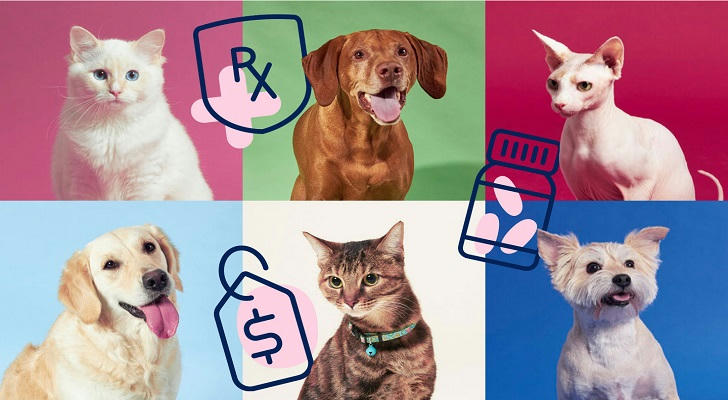Pet Insurance: A Comprehensive Guide to Protecting Your Furry Friends in the U.S.
Discover everything you need to know about pet insurance in the U.S., including its benefits, coverage options, and how to choose the best plan for your furry companion. Keep your pets healthy and your finances secure with the right pet insurance policy.

What is Pet Insurance?
Pet insurance is a type of health insurance designed to cover veterinary expenses for your pets. Just like human health insurance, pet insurance helps offset the cost of medical treatments, surgeries, and emergency care for your furry friends. With the rising cost of veterinary care, pet insurance has become an essential tool for pet owners who want to ensure their pets receive the best possible care without breaking the bank.
Why Do You Need Pet Insurance?
Pets are more than just animals—they’re family. However, unexpected illnesses or accidents can lead to hefty veterinary bills. Pet insurance provides financial protection, allowing you to focus on your pet’s health rather than worrying about the cost of treatment. Whether it’s a routine check-up or an emergency surgery, pet insurance ensures your pet gets the care they need.
How Does Pet Insurance Work in the U.S.?
In the U.S., pet insurance operates on a reimbursement model. Here’s how it typically works:
Choose a Plan: Select a pet insurance plan that suits your budget and your pet’s needs.
Pay the Vet Bill: When your pet requires medical care, you pay the veterinary bill upfront.
Submit a Claim: File a claim with your pet insurance provider, including the invoice and medical records.
Get Reimbursed: The insurance company reviews your claim and reimburses you for eligible expenses, minus any deductible or co-pay.
Most pet insurance plans in the U.S. do not cover pre-existing conditions, so it’s best to enroll your pet while they’re young and healthy.
Types of Pet Insurance Coverage in the U.S.
Pet insurance plans in the U.S. offer a variety of coverage options to meet different needs. Here are the most common types:
1. Accident-Only Coverage
This type of plan covers injuries resulting from accidents, such as broken bones, bites, or ingestion of foreign objects. It’s a more affordable option but does not cover illnesses.
2. Accident and Illness Coverage
This is the most popular type of pet insurance. It covers both accidents and illnesses, including infections, allergies, and chronic conditions like diabetes or arthritis.
3. Comprehensive Coverage
Comprehensive plans include accident and illness coverage, as well as additional benefits like:
Routine wellness care (e.g., vaccinations, flea prevention)
Dental care
Behavioral therapy
Alternative treatments (e.g., acupuncture, chiropractic care)
4. Wellness Plans
Wellness plans focus on preventive care and cover routine expenses such as:
Annual check-ups
Vaccinations
Spaying/neutering
Blood tests
These plans are often offered as add-ons to accident and illness policies.
What Does Pet Insurance Cover?
Pet insurance coverage varies by provider and plan, but most policies include the following:
1. Accidents
- Emergency visits
- Surgeries
- X-rays and lab tests
2. Illnesses
- Infections
- Chronic conditions (e.g., diabetes, cancer)
- Hereditary conditions (if not pre-existing)
3. Diagnostic Tests
- Blood work
- Ultrasounds
- MRIs
4. Surgeries
- Emergency surgeries
- Cancer treatments
- Orthopedic procedures
5. Medications
- Prescription drugs
- Pain management medications
6. Alternative Therapies
- Acupuncture
- Physical therapy
- Chiropractic care

What’s Not Covered by Pet Insurance?
While pet insurance covers a wide range of expenses, there are some exclusions to be aware of:
Pre-Existing Conditions: Most plans do not cover conditions your pet had before enrolling.
Routine Care: Unless you have a wellness plan, routine care like vaccinations and grooming is typically not covered.
Breeding Costs: Expenses related to breeding or pregnancy are usually excluded.
Cosmetic Procedures: Procedures like tail docking or ear cropping are not covered.
How to Choose the Best Pet Insurance in the U.S.?
Selecting the right pet insurance plan requires careful consideration. Follow these steps to make an informed decision:
1. Assess Your Pet’s Needs
Consider your pet’s age, breed, and health history. For example, certain breeds are prone to specific health issues, so choose a plan that covers those conditions.
2. Compare Providers
Research and compare different pet insurance companies. Look for:
Coverage options
Reimbursement rates
Deductibles and premiums
Customer reviews
3. Check for Exclusions
Read the policy details carefully to understand what’s not covered. Pay special attention to exclusions like pre-existing conditions or breed-specific issues.
4. Consider Your Budget
Choose a plan that fits your budget while providing adequate coverage. Keep in mind that lower premiums may come with higher deductibles or lower reimbursement rates.
5. Read Customer Reviews
Look for feedback from other pet owners to gauge the reliability and customer service of the insurance provider.
Top Pet Insurance Providers in the U.S.
Here are some of the leading pet insurance companies in the U.S.:
1. Healthy Paws
- Comprehensive coverage for accidents and illnesses
- No annual or lifetime limits
- Fast claim processing
2. Trupanion
- Covers 90% of veterinary costs
- No payout limits
- Direct payment option to vets
3. Nationwide
- Offers wellness plans
- Covers exotic pets
- High customer satisfaction
4. Embrace
- Customizable plans
- Covers alternative therapies
- Diminishing deductible feature
5. Pets Best
- Affordable premiums
- Covers routine care
- Fast reimbursement
How to File a Pet Insurance Claim?
Filing a pet insurance claim is simple if you follow these steps:
Visit the Vet: Take your pet to the vet and pay the bill.
Gather Documents: Collect the invoice, medical records, and any other required documents.
Submit the Claim: File the claim online, via email, or through the insurer’s mobile app.
Wait for Reimbursement: The insurer will review your claim and reimburse you based on your policy terms.
Tips for Maximizing Your Pet Insurance
Enroll Early: Sign up for pet insurance while your pet is young and healthy to avoid exclusions for pre-existing conditions.
Understand Your Policy: Familiarize yourself with the coverage, exclusions, and claim process.
Keep Records: Maintain a file of all veterinary visits, treatments, and invoices.
Review Annually: Reassess your pet’s insurance needs annually and adjust your plan if necessary.
Conclusion
Pet insurance is a valuable investment for any pet owner in the U.S. It provides financial security and ensures your pet receives the best possible care, no matter what life throws your way. By understanding the types of coverage, how to choose a plan, and the claims process, you can make informed decisions to protect your furry family member.
